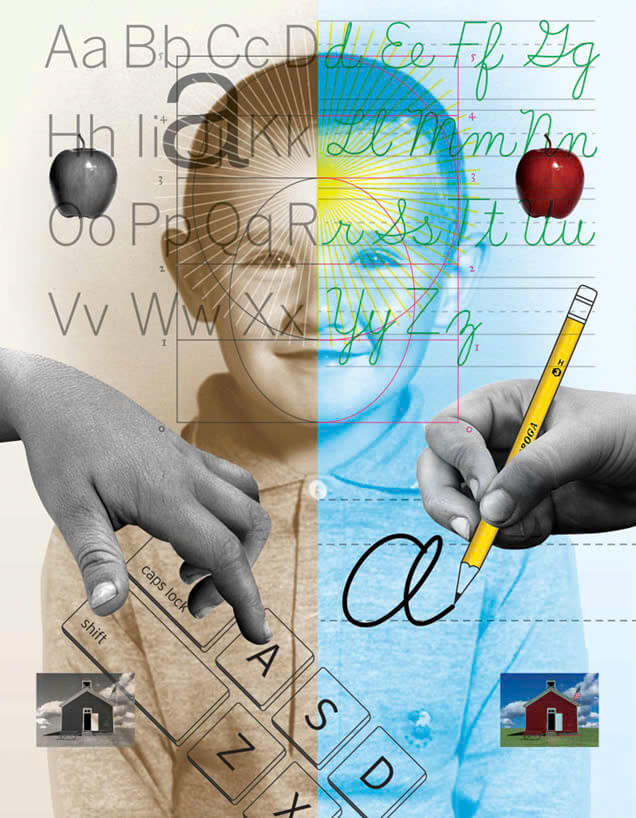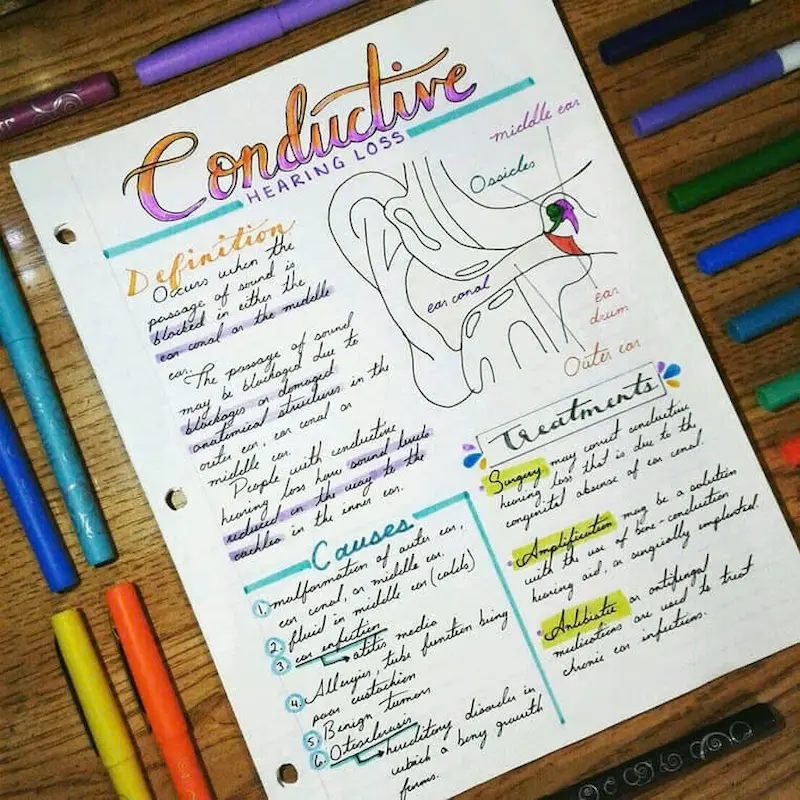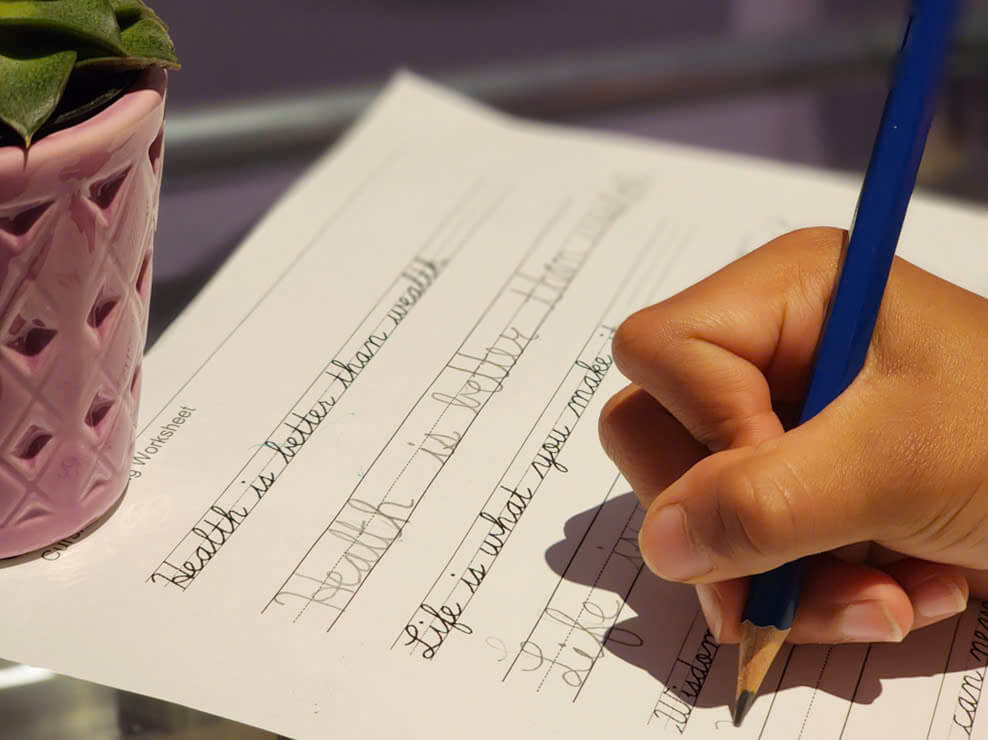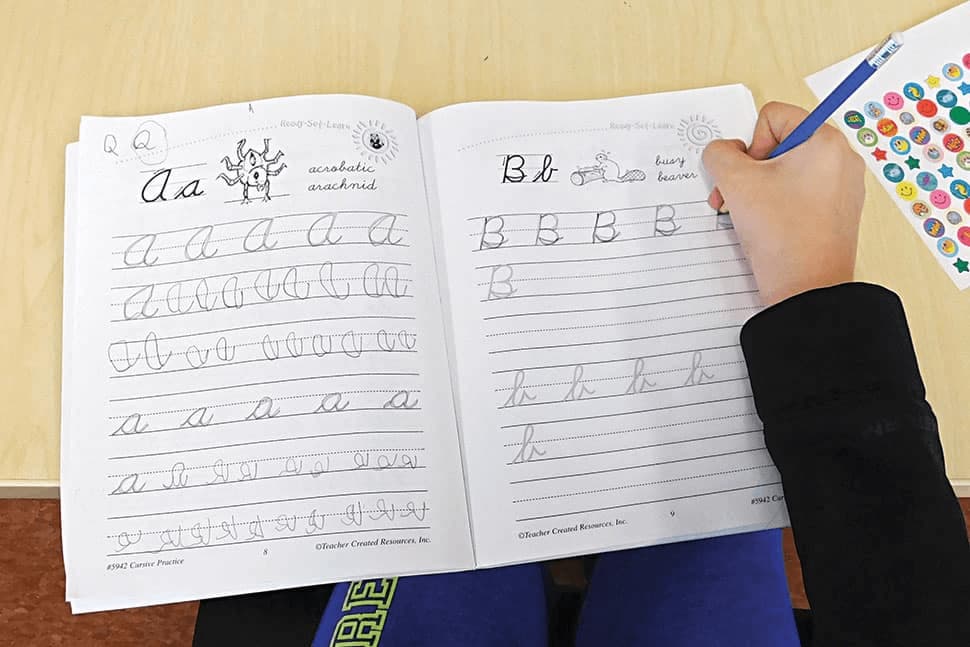In today’s technology-filled world, where keyboards and touchscreens dominate, it’s easy to forget the importance of cursive writing. The art of cursive may seem like a relic of the past, but there’s a growing body of evidence suggesting that it offers unique benefits that extend far beyond mere penmanship. Why is cursive important in this digital age?
Cursive writing, often associated with elegant script and flowing letters, has a profound impact on cognitive development, learning abilities, and even personal expression. Cursive writing isn’t just about penmanship – it plays a significant role in cognitive development, academic achievement, and personal expression. This guide explores the compelling reasons why cursive writing remains relevant and essential in today’s world.
The Surprising Science Behind Cursive Writing
Research shows that cursive writing engages brain networks more than typing, enhancing memory, learning, and fine motor skills.
1. Cognitive Superpowers: How Cursive Boosts Your Brain
When you ask “Why is cursive important?” The answer starts with your brain. Cursive writing isn’t just about putting pen to paper – it’s a full-blown cognitive workout! Unlike typing, where you simply press keys, cursive engages multiple brain regions simultaneously, creating complex neural pathways that lead to some amazing benefits:
- Enhanced Memory Retention: Cursive requires more focus and mental effort than typing, strengthening neural connections associated with memory. This makes it easier to store and retrieve information, improving long-term memory.
- Improved Reading Comprehension: The fluid, connected nature of cursive writing strengthens your brain’s ability to process visual information, leading to better reading skills. You’re not just seeing words; you’re truly understanding them.
- Developing Critical Thinking: Cursive enhances critical thinking and problem-solving skills. Your brain is constantly planning and executing complex movements to form letters and connect them, boosting cognitive abilities.
- Refined Hand-Eye Coordination: Studies published in the journal Frontiers in Psychology have shown that cursive handwriting helps refine motor skills and hand-eye coordination. This improved coordination benefits handwriting and other activities requiring dexterity.

So, the next time you pick up a pen to write in cursive, remember that you’re not just writing – you’re giving your brain a powerful workout!
2. Academic Advantages That Will Shock You
Cursive writing isn’t just an old-school skill – it’s a secret weapon for academic success! While typing might seem like the go-to in today’s digital world, research shows that students who master cursive often have a significant advantage in the classroom. Here’s how cursive can boost your academic performance:
- Score Higher on Literacy Tests: Cursive helps students develop a deeper understanding of letter-sound relationships and reinforces correct spelling patterns, leading to better performance on literacy tests. It builds a stronger foundation for language arts.
- Take More Efficient Notes: Cursive allows for faster and more efficient note-taking compared to print. The continuous flow helps students capture more information without disrupting their train of thought, leading to better notes and retention.

- Process Information More Deeply: Cursive encourages deeper processing of information, leading to better understanding and memory. Students actively engage with the material, improving critical thinking skills.
- Demonstrate Improved Overall Academic Performance: Mastery of cursive has been linked to better overall academic performance, especially in subjects requiring extensive writing. It provides a strong foundation for success.
So, if you’re looking to give yourself an academic edge, don’t underestimate the power of cursive! It’s a skill that can unlock your full learning potential and pave the way for academic excellence.
3. Learning Differently: A Lifeline for Struggling Students
Cursive writing isn’t just beneficial for students who find traditional learning methods easy; it can be a game-changer for those facing learning challenges. If you’re wondering why cursive is important in this context, it’s because it offers unique support that traditional print writing often can’t. Here’s how cursive can be a lifeline for struggling learners:
- Reducing Letter Reversals for Dyslexic Students: Dyslexia can make it difficult to distinguish between certain letters, like “b” and “d” or “p” and “q”. Cursive helps reduce these reversals because each letter has a distinct starting and ending point. The continuous flow also helps students visualize the word as a whole.
- Providing an Alternative Writing Method: Cursive can be easier to master than print for students who struggle with traditional writing. The fluid movements can lead to improved legibility and reduced frustration.
- Improving Focus and Concentration: The rhythmic nature of cursive can improve focus and concentration. The act of forming letters engages multiple senses and requires sustained attention.
- Building Confidence in Written Expression: Success with cursive can boost confidence for students who struggle with writing. As they develop fluency, they may feel more motivated to engage in writing activities.

Cursive writing can be a powerful tool for inclusivity in the classroom, providing alternative learning pathways for students who may struggle with traditional methods. By embracing cursive, we can create a more supportive and empowering learning environment for all students.
Digital Age Meets Traditional Skills
1. A Professional Edge in a Digital World
Even in our technology-driven world, where emails and instant messages dominate communication, cursive writing offers some surprising and valuable advantages in the professional sphere.
- Create a Distinctive, Personal Signature: In a world of digital signatures and typed names, a handwritten cursive signature stands out as a mark of distinction and personal identity. It’s a unique identifier that can’t be easily replicated, adding a touch of professionalism and authenticity to documents and correspondence.

- Adds a Unique Touch to Professional Correspondence: While emails and typed letters are efficient, a handwritten note in cursive adds a personal touch that can make a lasting impression. It shows that you took the time and effort to craft a unique message, conveying thoughtfulness and sincerity.
- Signals Creativity and Attention to Detail: In a professional landscape where digital communication often feels impersonal and standardized, cursive writing signals creativity and attention to detail. It suggests that you value quality and craftsmanship, even in a fast-paced world.
- Stands Out in a Sea of Digital Communication: In a world overflowing with emails, texts, and social media updates, a handwritten cursive note or letter is a refreshing change. It cuts through the digital clutter and captures attention, making your message more memorable and impactful.
So, while technology may dominate the modern workplace, don’t underestimate the power of cursive. It’s a skill that can set you apart, enhance your personal brand, and leave a lasting impression in the professional world.
2. Preserving Cultural Heritage
In a world increasingly dominated by digital text, cursive writing stands as a guardian of our cultural heritage. It’s more than just a writing style, it’s a key that unlocks the doors to history, allowing us to connect with the past, understand our ancestors, and appreciate the artistry of handwritten communication.
- Allows Access to Primary Historical Documents: Cursive is essential for understanding primary historical documents, like letters and diaries. These documents offer invaluable insights into the past.

- Helps Preserve Family Histories and Personal Narratives: Family history often lies hidden in old letters and journals written in cursive. Knowing cursive allows us to unlock these personal narratives and connect with our ancestors.
- Connect Us to Our Cultural Roots: Cursive writing is deeply intertwined with our cultural heritage. Different cultures have developed unique cursive styles, reflecting their artistic traditions.
- Serves as a Form of Artistic Expression: Cursive is an art form. The flowing lines and unique flourishes can convey emotion, personality, and artistic flair.
In a world of fleeting digital messages, cursive writing stands as a testament to the enduring power of handwritten communication. It connects us to our past, preserves our stories, and allows us to express ourselves in a unique and beautiful way.
Cursive Writing in Education: A Changing Landscape
The role of cursive writing in education has been a topic of much discussion and debate in recent years. With the rise of technology and the increasing reliance on keyboards, some schools have shifted away from explicit cursive instruction. However, there’s a growing movement to reintegrate cursive into curriculums, recognizing its unique benefits for cognitive development, academic achievement, and personal expression.
Current Trends in Teaching
In the past few decades, many schools have reduced or even eliminated cursive writing from their curricula. This shift was largely driven by the increasing prevalence of computers and the perception that cursive was becoming obsolete in a digital world. However, recent research highlighting the cognitive and academic benefits of cursive has prompted a re-evaluation of its importance in education.
Many educators now advocate for reintroducing cursive instruction, particularly in the early grades. They argue that cursive helps develop fine motor skills, hand-eye coordination, and cognitive abilities that are crucial for overall learning. Furthermore, cursive can be especially beneficial for students with learning differences, such as dyslexia, as it can improve letter recognition and reduce letter reversals.

Curriculum Integration
There are various effective programs and approaches for teaching cursive writing systematically. One popular example is “Handwriting Without Tears,” a multisensory program that uses a developmentally appropriate approach to teach handwriting skills, including cursive, starting in the early grades.

To delve deeper into the current state of cursive writing in education, we encourage you to read our insightful article: Is Cursive Still Taught in Schools? This article provides a comprehensive overview of the current trends, debates, and research surrounding cursive instruction in modern education.
Frequently Asked Questions
1. Why is cursive writing important in the digital age?
Cursive writing remains important in the digital age because it engages cognitive processes that typing or digital input cannot replicate. Writing in cursive enhances memory retention, critical thinking, and reading comprehension. Furthermore, cursive allows individuals to connect with historical documents, family heritage, and personal expression. Despite digital advancements, cursive continues to offer unique cognitive and cultural benefits.
2. Can learning cursive improve academic performance?
Absolutely! Learning cursive writing helps students improve reading comprehension, spelling, and overall academic performance. The process of learning cursive improves fine motor skills, which in turn supports better writing and communication. Furthermore, cursive writing can help students take notes faster and more effectively during lectures.
3. How long does it take to learn cursive writing?
With regular practice, students can achieve basic cursive proficiency in 3-6 months, though continued practice is necessary for mastery.
4. How can I practice cursive writing at home?
There are many ways to practice cursive writing at home. Start with free printable worksheets available online, which offer structured exercises to help with letter formation, word connection, and full sentences. Setting aside dedicated practice time each day and focusing on consistent improvement will help you develop better fluency in cursive.
Cursive: A Timeless Skill for a Modern World
The importance of cursive writing extends far beyond simple penmanship. In a world increasingly dominated by digital communication, cursive stands as a testament to the enduring power of the handwritten words. It’s a skill that fosters cognitive development, enhances academic performance, adds a personal touch to professional interactions, and connects us to our cultural heritage.
By embracing cursive, we unlock a world of benefits. We strengthen our brains, improve our learning abilities, and express ourselves in a unique and beautiful way. Cursive allows us to access historical documents, preserve family stories, and add a personal touch to our communication. It’s a skill that bridges the gap between the past and the present, connecting us to our roots while empowering us for the future.
Ready to embark on your cursive writing journey? Worksheetzone offers a wealth of resources to help you master this timeless skill. From printable worksheets to interactive online tools, we provide everything you need to develop beautiful, fluid cursive writing. Start today and experience the joy and benefits of cursive!







